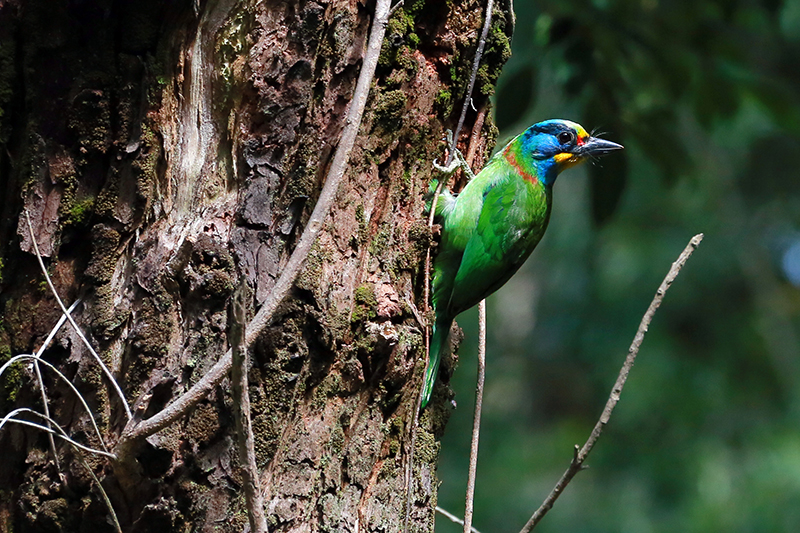
(Written by the Office of Public Affairs) As soon as it appeared in Taipei’s Daan Forest Park, the “Flowery Monk” caused a sensation, attracting massive crowds and a group of photography enthusiasts setting up long lenses for pictures. The frenzy even made the news! If you are curious about what a Flowery Monk is, you are in luck! Because the head of the Fu Jen Catholic University Office of the Secretariat, Chen Ying-liang, captured several Flowery Monk families right here on campus, each photo meticulously recording their foraging, pecking at tree holes, and even the adorable scenes of them burrowing into holes, with only their heads showing. Let’s take a closer look!
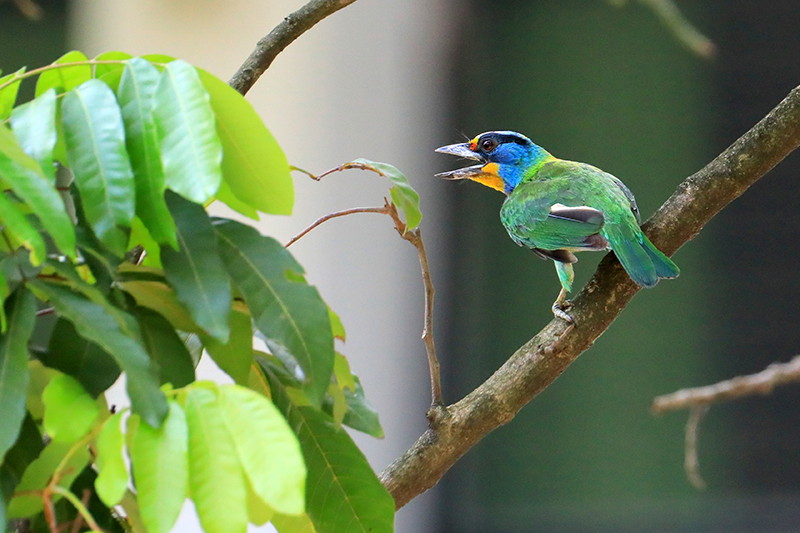
▲Source: Chen ying-liang, head of the Office of the Secretariat.
The term “Flowery Monk” is actually a nickname for the Taiwan Barbet, classified as a species unique to Taiwan by the “Taiwan National Parks” website. It is named for its five colors of plumage, including a black beak and area behind the eyes, yellow forehead and throat, red lores and upper chest feathers, blue face and crown, and green body; it is because of these vibrant colors that it received the nickname “Flowery Monk of the Forest,” a nickname shared with famous historical figure Lu Zhishen. Besides its dazzling plumage, the Taiwan Barbet also draws attention for pecking tree holes, due to which it is often mistaken for a woodpecker.

▲Source: Chen ying-liang, head of the Office of the Secretariat.
The Taiwan Barbet prefers to peck holes in drier and well-ventilated trees, especially liking dead wood with low moisture content. After choosing a spot, it pecks a circular hole about 5 cm in diameter on the surface, then downwards to create a deep hole 30-40 cm deep, which serves as its nesting site. According to the photographic records of the head of the Office of the Secretariat Chen Ying-liang, adult Taiwan Barbets have been spotted at various tree holes on campus, though the deep nesting sites meant that it was not possible to capture images of the baby birds. The Taiwan Barbet mainly eats fruit and catches small insects to feed its young during the nesting period.
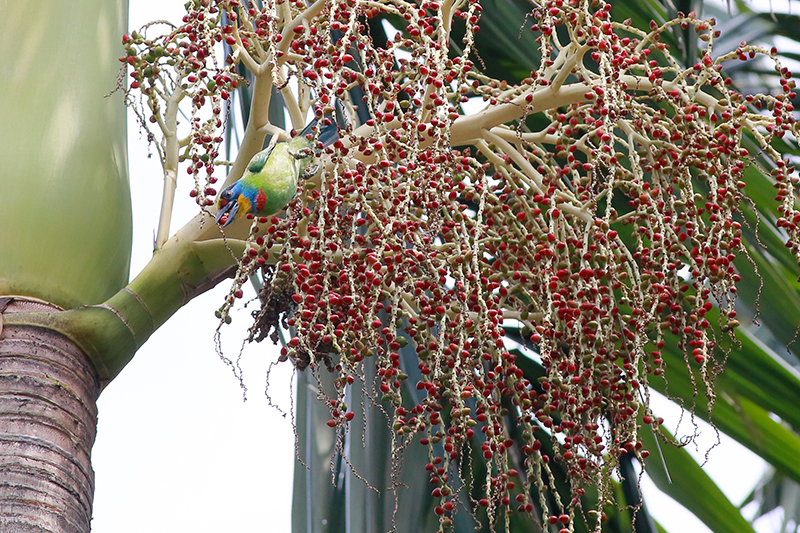
▲Source: Chen ying-liang, head of the Office of the Secretariat.
The Taiwan Barbet has three natural predators: the first is squirrels, as their ability to climb close to tree holes poses a threat; the second is the Crested Goshawk, which can also be seen on the university campus; the third, unsurprisingly, is humans. For instance, some people want to catch the brightly colored birds to keep at home, while the cutting down and removal of dead trees eliminates places for them to raise their next generation. Regarding catching Taiwan Barbets to keep at home, the Wild Birds Society of Taipei Rescue Center strongly advises against it, as caged wild birds easily injure themselves against the cage or may even die. Popular Taiwanese social media platform Dcard also recently featured a story from netizens rescuing three fledglings dislodged by a typhoon; despite their rescuers having experience raising fledglings, accidents still happened, as one was crushed to death in a sleeping bag, while another died after crashing into a ceiling fan at home, leading to the tragic decision to release the surviving fledgling. In response, netizens mournfully appealed for professional assistance in cases of fallen or injured birds.
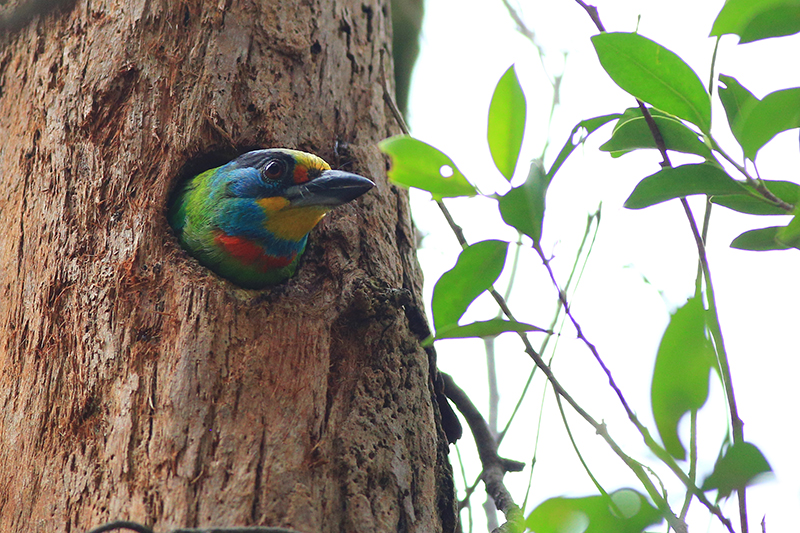
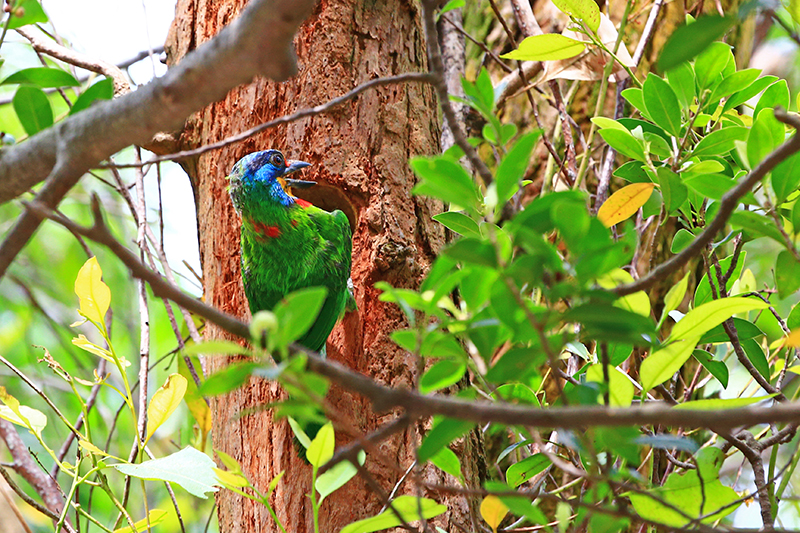
▲Source: Chen ying-liang, head of the Office of the Secretariat.
Other beautiful sightings on campus include the Warbling White-eye and magpies. The Warbling White-eye adapts well to urban life, hence together with the Light-vented Bulbul and sparrows, they are called the “Urban Trio.” The Warbling White-eye is small and cute in appearance with a pleasant-sounding call, and like the Taiwan Barbet, people want to keep them as pets, but wild birds are not suitable for caging; magpies are common residents in Taiwan, colored black, white, and blue, are part of the Corvidae family, and mainly feed on small animals and scavenging animal carcasses. During the breeding season, they nest in tall, solitary trees or on the tops of pylons, where their large and round nests are easily recognizable.
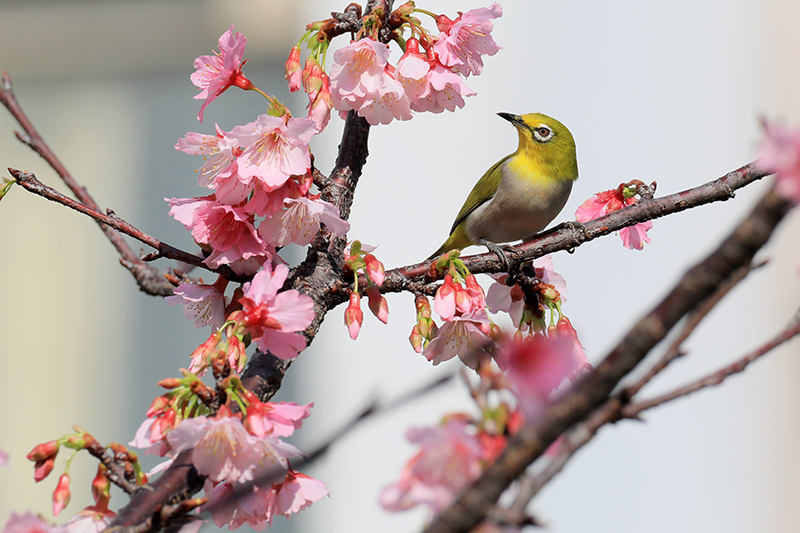
▲Source: Chen ying-liang, head of the Office of the Secretariat.
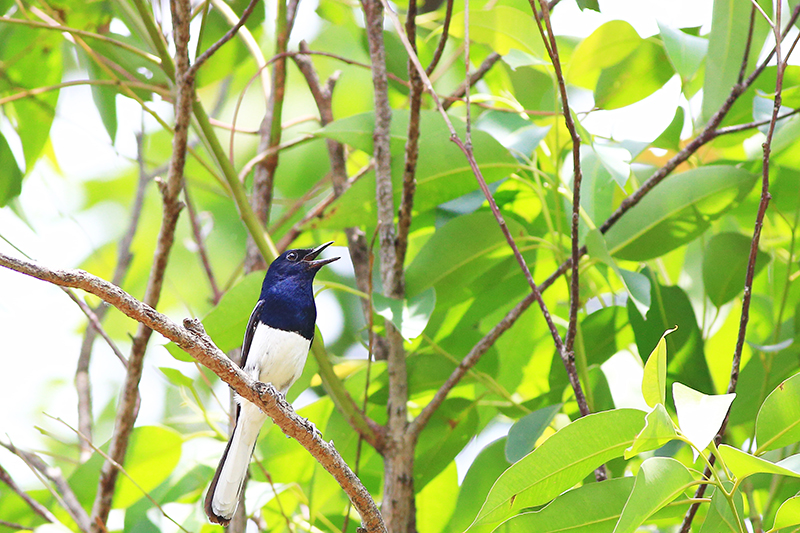
▲Source: Chen ying-liang, head of the Office of the Secretariat.

